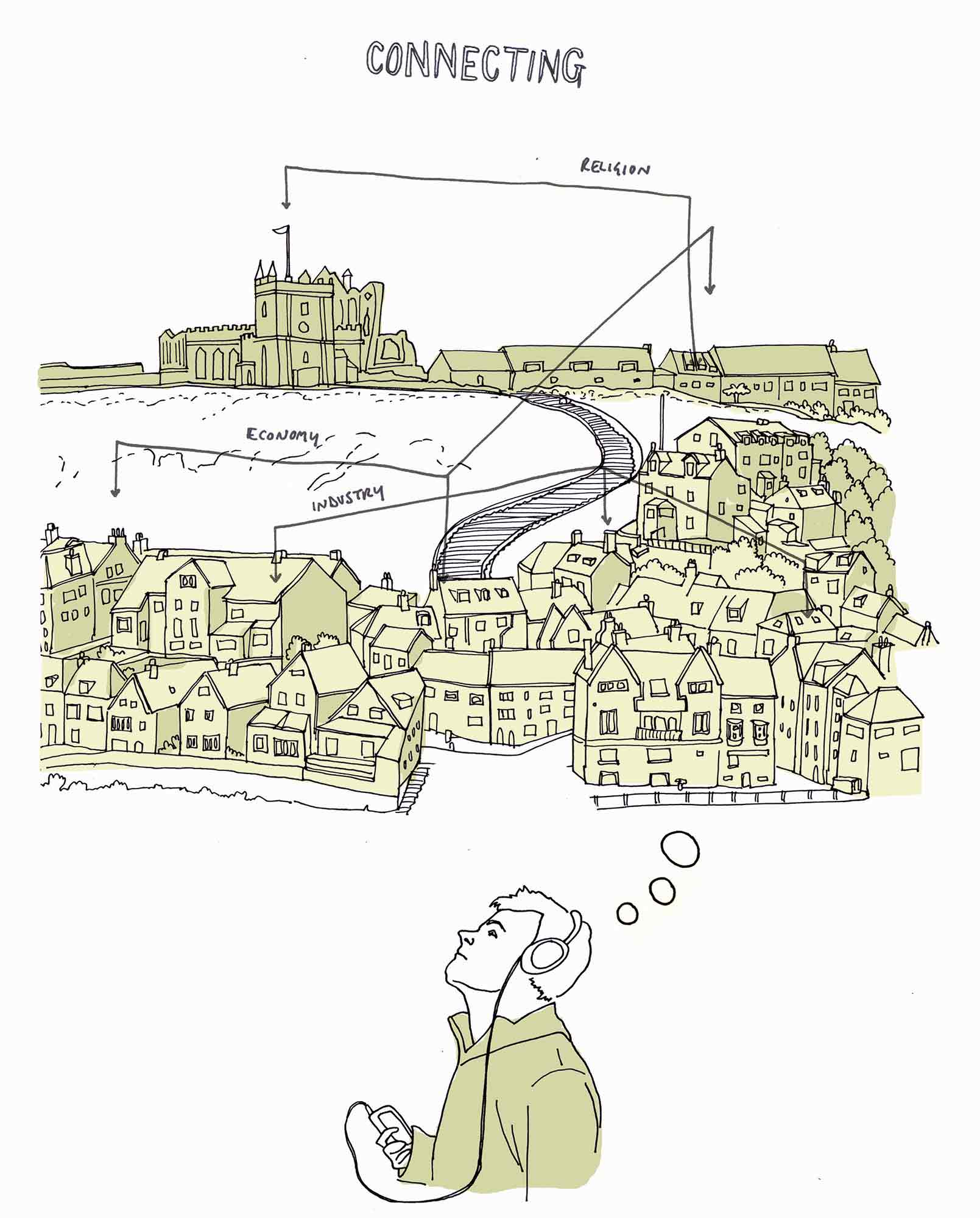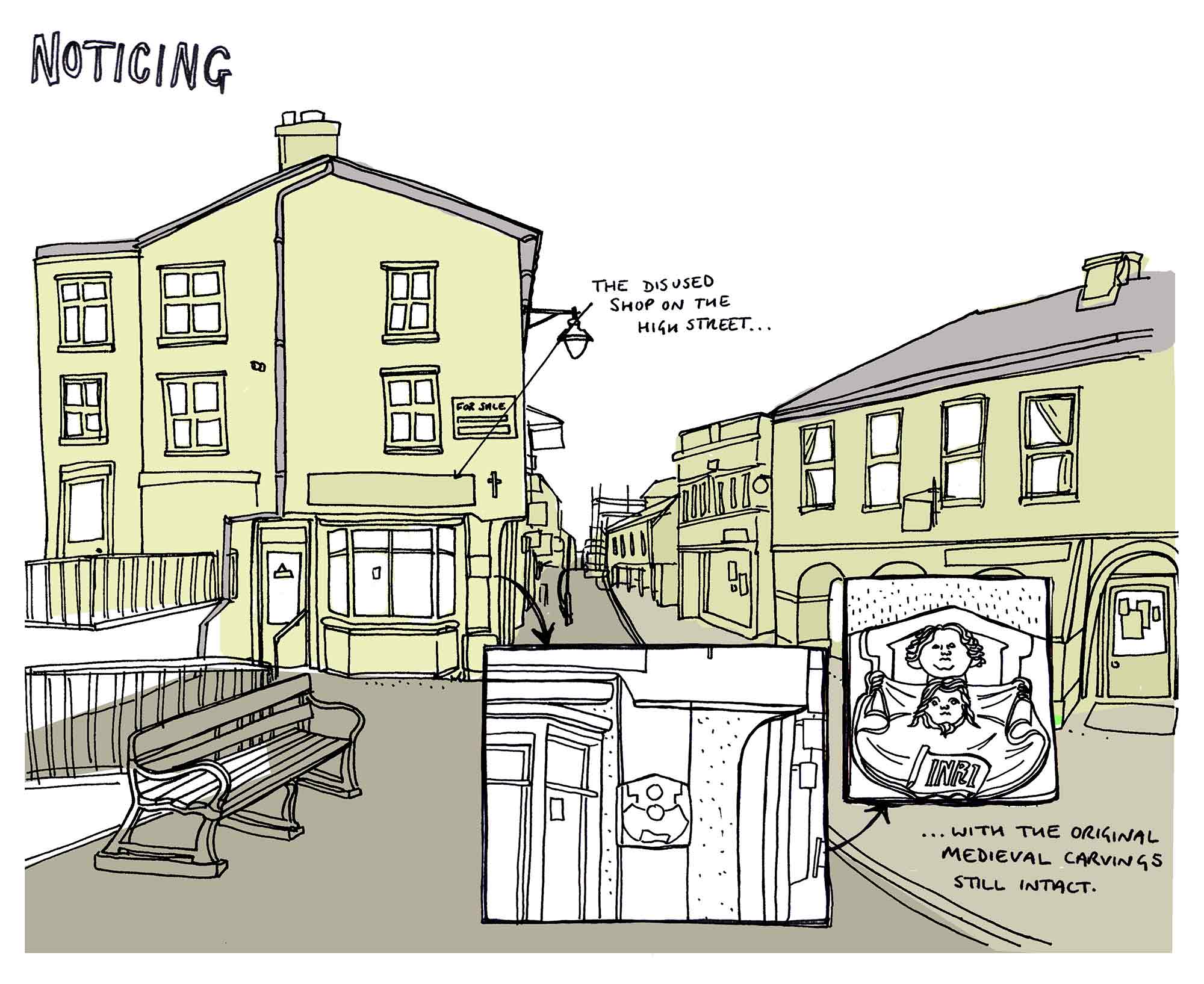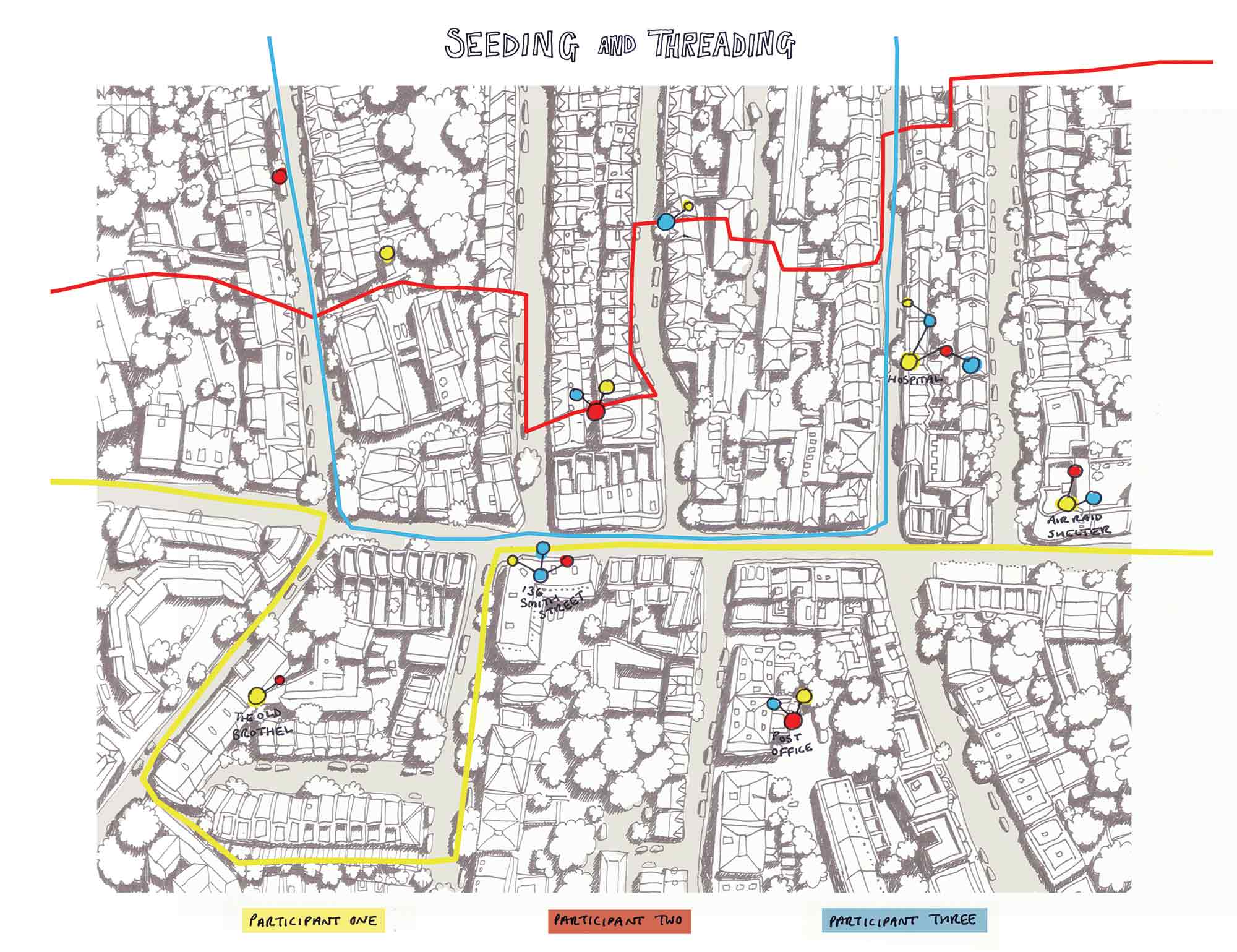- Login
Critical Spatial Practice




I explore theories concerned with spatial practice that work across art, architecture and education to argue for a shift in subjectivity from guide to participant in the production of tours. Jonathan Hill’s concept of ‘creative users’, Jane Rendell’s ‘critical spatial practice’ and Richard Edwards’ & John Usher’s ‘pedagogies of (dis)location’ are formative in creating an interdisciplinary context for making tours, a process that focuses on the social dimensions of interacting with people objects and places whilst on-the-move.
Learning-through-Touring is a methodology for exploring ways in which people interact with the built environment in the spaces around, between and within buildings. The key idea is that learning through touring is haptic – the learner is a physical, cognitive and emotional participant in the process. The research develops the concept that tours, rather than conceived as finished products, are designed to evolve through use participation and over time. In all of this, there is an underlying belief that what is formally presented to us by ‘authorities’ is open to self-discovery, questioning and independent enquiry.
The mobilised learner is introduced as a participant who interacts with technologically embedded cues that prompt change and action between, in and around buildings. Three pairs of productive concepts and conceptual methods drawn from theoretical investigations and design practice:
subjective archaeology / micromapping
sensory interplay / haptic referencing
critical tour guides / ground untruthing
are presented as building blocks for the methodology developed through projects to investigate attributes of the mobilised learner. The research aims to open up thinking around what we mean by mobilised learning and how this contributes to the design of tools and services for exploring places.
I’m a senior lecturer in Design at Goldsmiths, University of London and completed a PhD by Architectural Design in 2008. I’m interested in mobilised learning, participatory sensing and designing alternative methods for navigating the urban landscape. An important aspect of my work has been in using technologies to sense and record change in the material fabric of our built environment so that buildings can be described as ‘learning-enabled’. I am now working on an emerging project that explores methods for writing poetry whilst on-the-move and publishing this as geo-located data.
I have developed socio-spatial production of the tour as a form of critical spatial practice.
This has involved affecting shifts in thinking from site as fixed location to a context for learning, from the institutional preservation of buildings to everyday user activation and from consumer product to socially produced tour to evolve learner-centred approaches to touring as a process. Making ‘insertions’ into existing locations, exploring relations between immediate reactions and reverberations over time, linking concentration with contemplation in making critical responses has evolved a particular understanding of participation – in which people use the mediating capacities of geo-located data, audio narratives or annotated maps as cues to action in seemingly controlled spaces.
Paul Rodaway. 2011. Sensuous Geographies, London: Routledge
Brian Larkin. 2013. The Politics and Poetics of Infrastructure, Annual Review Anthropology 42:327–43
Kenneth Goldsmith. 2011. Uncreative Writing, New York/Chichester: Columbia University Press




































































